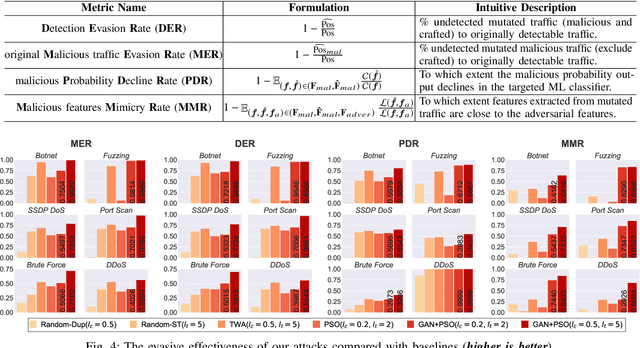Practical Traffic-space Adversarial Attacks on Learning-based NIDSs
Paper and Code
May 15, 2020



Machine learning (ML) techniques have been increasingly used in anomaly-based network intrusion detection systems (NIDS) to detect unknown attacks. However, ML has shown to be extremely vulnerable to adversarial attacks, aggravating the potential risk of evasion attacks against learning-based NIDSs. In this situation, prior studies on evading traditional anomaly-based or signature-based NIDSs are no longer valid. Existing attacks on learning-based NIDSs mostly focused on feature-space and/or white-box attacks, leaving the study on practical gray/black-box attacks largely unexplored. To bridge this gap, we conduct the first systematic study of the practical traffic-space evasion attack on learning-based NIDSs. We outperform the previous work in the following aspects: (1) practical---instead of directly modifying features, we provide a novel framework to automatically mutate malicious traffic with extremely limited knowledge while preserving its functionality; (2) generic---the proposed attack is effective for any ML classifiers (i.e., model-agnostic) and most non-payload-based features; (3) explainable---we propose a feature-based interpretation method to measure the robustness of targeted systems against such attacks. We extensively evaluate our attack and defense scheme on Kitsune, a state-of-the-art learning-based NIDS, as well as measuring the robustness of various NIDSs using diverse features and ML classifiers. Experimental results show promising results and intriguing findings.
 Add to Chrome
Add to Chrome Add to Firefox
Add to Firefox Add to Edge
Add to Edge